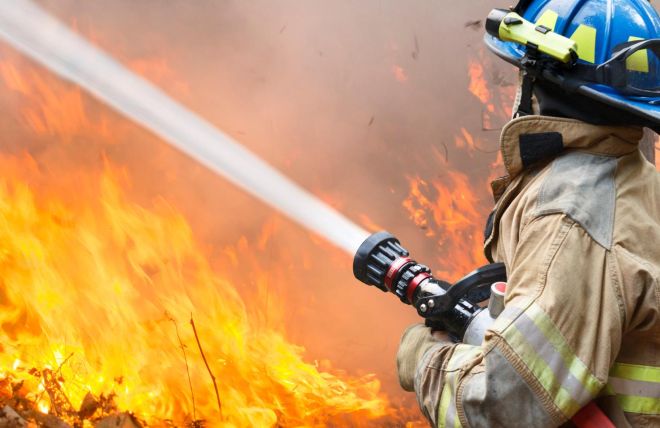Natural disasters such as hurricanes, tornadoes, floods, wildfires, and severe storms each pose unique challenges to communities. It's essential to assess the specific risks your community faces and understand how these events might impact your HOA.
Table of Contents
- Understanding the Types of Natural Disasters
- Developing a Comprehensive Disaster Plan
- Building a Disaster Response Team
- Securing Your Community’s Property
- Establishing Effective Communication Channels
- Post-Disaster Recovery and Support
Understanding the Types of Natural Disasters
Common Natural Disasters Affecting Communities
The most common natural disasters that can impact HOAs include:
Tornadoes
Characterized by powerful winds that can reach speeds of over 200 miles per hour, tornadoes can cause severe damage to buildings, infrastructure, and landscapes in a matter of minutes.
Read our guide on Tailoring Your HOA’s Emergency Plans for Floods
Hurricanes
These massive storm systems bring intense winds, heavy rainfall, and storm surges, leading to widespread flooding, property damage, and long-term disruptions. We created a A Step-by-Step Guide for Hurricane Preparedness in HOA's
Floods
Often resulting from heavy rains, storm surges, or rapid snowmelt, floods can submerge homes, destroy infrastructure, and create life-threatening situations for residents. Read on how to Tailor Your HOA’s Emergency Plans For Floods
Wildfires
Particularly in dry, forested regions, wildfires can spread rapidly, destroying homes and natural habitats, and leaving communities with long-term recovery challenges. Preparing Your HOA for Wildfires
Earthquakes
Sudden and often without warning, earthquakes can cause significant structural damage, trigger landslides, and lead to other hazards such as fires or tsunamis.
Severe Storms
This category includes thunderstorms, blizzards, and ice storms, which can bring damaging winds, hail, lightning, and heavy snow or ice, leading to power outages, road closures, and property damage.
Assessing Risk in Your Community
Understanding the specific risks your community faces is the first step in effective disaster preparedness. Here's how to evaluate which disasters are most likely to affect your community:
Geographic Location
Consider your community’s geographic location. Coastal areas are more vulnerable to hurricanes and storm surges, while inland regions might face greater risks from tornadoes, floods, or severe storms. Communities near forests or grasslands are particularly susceptible to wildfires, and those near fault lines must prepare for earthquakes.
Historical Data
Review historical data to identify which natural disasters have previously impacted your community. This can provide valuable insights into the types and frequency of disasters you are likely to face in the future.
Local Environment
Evaluate the surrounding environment, including proximity to rivers, lakes, forests, or mountains. These natural features can influence the types of disasters your community might encounter, such as floods, wildfires, or landslides triggered by earthquakes.
Several resources can help your HOA identify and assess the risks specific to your community:
FEMA (Federal Emergency Management Agency)
FEMA provides extensive resources, including maps and tools, to help communities identify flood zones, earthquake fault lines, and other disaster-prone areas. Their Hazard Mitigation Planning website offers detailed information on risk assessment and mitigation strategies.
Local Government Data
Your local government’s emergency management office can provide valuable data on the most common natural disasters in your area. They may also offer community-specific hazard maps and disaster preparedness resources.
USGS (United States Geological Survey)
For earthquake-prone areas, the USGS provides detailed information on fault lines, seismic activity, and earthquake preparedness.
National Weather Service (NWS)
The NWS offers forecasts and warnings for severe weather events, including tornadoes, hurricanes, and storms. Their resources can help your community stay informed and prepared for weather-related disasters.
Developing a Comprehensive Disaster Plan
Creating a thorough disaster plan is critical for ensuring your community is prepared. Your plan should include clearly marked evacuation routes and shelter locations, as well as detailed communication strategies for during and after a disaster. Assigning specific roles to HOA board members and volunteers, as outlined in our guide on building a strong disaster response plan, is also essential.
Essential Components of a Disaster Plan
To effectively prepare for and respond to disasters, your HOA’s disaster plan should include several key components such as evacuation routes, shelter locations, and disaster communication strategies. It’s important that these components are communicated clearly to all residents to ensure everyone knows what to do when a disaster strikes.
Evacuation Routes and Shelter Locations
Clearly identify and map out evacuation routes within the community. These routes should be accessible to all residents, including those with mobility challenges. Designate safe shelter locations both within the community and in nearby areas. These shelters should be equipped with basic necessities and should be accessible during all types of weather conditions. Regularly communicate these routes and locations to residents, ensuring they are well-versed in the procedures to follow during an emergency.
Communication Strategies During and After a Disaster
Develop a multi-channel communication plan that includes text alerts, emails, social media updates, and community websites. This ensures that critical information reaches all residents promptly. Pre-designate a spokesperson or communication lead who will be responsible for disseminating information during and after the disaster. This helps maintain consistency and accuracy in the messaging. Include backup communication methods, such as radio broadcasts or physical bulletin boards, in case of power outages or internet failures. Ensure the communication plan also covers post-disaster updates on safety, recovery efforts, and community support services. Read our guide on Best Practices for HOA Disaster Communication.
Roles and Responsibilities for HOA Board Members and Volunteers
Clearly define the roles and responsibilities of HOA board members, volunteers, and any other key personnel. Assign specific tasks such as coordinating evacuations, managing shelters, and communicating with local authorities. Establish a chain of command to ensure decisions are made swiftly and efficiently. This helps prevent delays in response and reduces the likelihood of conflicting information being disseminated. Regularly train and conduct drills with board members and volunteers to ensure they are prepared to fulfill their roles during an actual disaster.
Customizing the Plan for Different Disasters
While the essential components of a disaster plan are broadly applicable, it’s crucial to tailor the plan to address the specific threats your community may face. For instance, incorporating strategies for wildfires, floods, and tornadoes ensures your community is well-prepared for any situation. Integrating multi-disaster preparedness into your plan is also key to handling complex events where multiple disasters occur simultaneously.
- Floods: Incorporate specific flood response strategies, such as pre-disaster sandbag distribution, the elevation of utilities and critical infrastructure, and the identification of flood-prone areas. Ensure evacuation routes avoid low-lying areas susceptible to flooding.
- Tornadoes: Focus on designating and marking tornado shelters or safe rooms within homes and community buildings. Emphasize quick communication strategies to ensure residents can reach safety within the limited warning time typical of tornadoes.
- Wildfires: Develop defensible space guidelines to reduce wildfire risks, and create evacuation plans that account for rapid fire spread. Designate escape routes that avoid heavily wooded areas and ensure residents are aware of fire-resistant landscaping practices.
Building a Disaster Response Team
An effective disaster response team is crucial for coordinating efforts before, during, and after an emergency. This includes identifying key roles such as communication lead, safety officer, and logistics coordinator. Regular training and drills ensure that the team is prepared to handle various , including those specific to wildfires and other threats.
Assembling the Right Team
The effectiveness of your disaster response hinges on having the right people in key roles. Here’s how to identify and recruit the members of your team:
- Communication Lead: This person is responsible for disseminating information to residents before, during, and after a disaster. They manage all communication channels, including text alerts, emails, social media, and the community website. They also coordinate with local authorities and emergency services to ensure accurate and timely updates.
- Safety Officer: The safety officer oversees the implementation of safety protocols, such as securing buildings, ensuring evacuation routes are clear, and managing emergency supplies. They also conduct safety checks during and after the disaster to assess damage and coordinate any necessary evacuations.
- Logistics Coordinator: This role involves organizing resources and supplies, such as emergency kits, food, water, and first aid materials. The logistics coordinator also ensures that shelters are prepared and that supplies are distributed efficiently during a disaster.
- Volunteer Coordinator: The volunteer coordinator recruits and manages a team of volunteers who can assist with various tasks, such as helping with evacuations, staffing shelters, and distributing supplies. They ensure that volunteers are properly trained and ready to respond when needed.
Training and Drills
Regular training and drills are essential to keeping your disaster response team prepared and ensuring that all members know their roles and responsibilities when a disaster strikes. These drills should simulate realistic scenarios, allowing team members to practice their response to different types of disasters.
Ongoing Training
Continuous education and refresher courses are crucial for maintaining the readiness of your disaster response team. Regular training sessions help reinforce procedures, update team members on new protocols, and ensure that everyone remains proficient in their roles.
Skill Development
Training also allows team members to develop new skills, such as advanced first aid, search and rescue techniques, or the use of emergency communication tools. This continuous improvement enhances the overall capability of the disaster response team.
Conducting Community-Wide Drills
Organize community-wide drills that simulate various disaster scenarios, such as a tornado strike, a flood, or a wildfire evacuation. These drills should mimic real-life conditions as closely as possible, including the use of emergency equipment, communication systems, and evacuation routes.
Securing Your Community’s Property
Implementing preventive measures, such as defensible space guidelines for wildfire-prone areas, and securing outdoor structures and utilities before hurricanes or tornadoes can significantly reduce damage. Routine maintenance and inspections, along with encouraging residents to take proactive steps in flood-proofing and storm preparation, are also key to protecting your community.
Preventive Measures to Reduce Damage
Taking proactive steps to safeguard your community’s property can mitigate the impact of natural disasters and help protect both common areas and individual homes. This includes:
- Creating defensible space around buildings in wildfire-prone areas by clearing away flammable vegetation and maintaining a buffer zone between homes and nearby forests or grasslands. This space helps slow the spread of wildfires and provides firefighters with a safer area to operate.
- Encouraging residents to use fire-resistant plants and materials in their landscaping. For example, choose plants with high moisture content and avoid placing flammable materials, such as mulch, near homes.
- Regularly cleaning gutters and roofs to remove dry leaves, pine needles, and other debris that could ignite during a wildfire. Installing non-combustible roofing materials and screens over gutters can further reduce the risk of fire spreading.
- Ensuring that all outdoor structures, such as gazebos, playground equipment, and storage sheds, are securely anchored to withstand high winds. Reinforce fences and gates, and remove any loose objects that could become projectiles during a storm.
- Protecting utilities by securing and reinforcing HVAC units, water heaters, and electrical panels. Elevate utilities in flood-prone areas to prevent water damage, and ensure that all connections are weatherproofed.
- Installing storm shutters on windows and reinforcing garage doors to prevent wind damage. Encourage residents to do the same, especially in areas prone to hurricanes or tornadoes.
Routine Maintenance and Inspections
Regular maintenance and inspections are essential for identifying vulnerabilities in your community’s infrastructure and ensuring that all protective measures remain effective.
- Conduct regular inspections of roofs to check for loose or damaged shingles, leaks, and other potential issues. Repair any damage promptly to prevent further deterioration during a storm.
- Inspect windows and doors to ensure that seals are intact and that they are properly weatherproofed. Replace any damaged seals or caulking to prevent water intrusion during heavy rains or storms.
- Regularly clean and inspect gutters, downspouts, and storm drains to ensure they are free of debris and functioning properly. This helps prevent flooding by allowing water to flow away from buildings and common areas.
- Inspect other critical infrastructure, such as retaining walls, fences, and utility lines, for signs of wear or damage. Make necessary repairs or reinforcements to ensure they can withstand the stresses of a natural disaster.
Establishing Effective Communication Channels
Establishing a multi-channel communication strategy is vital for keeping residents informed before, during, and after a disaster. Using text alerts, emails, social media, and community websites ensures that critical information reaches all residents promptly. Post-disaster communication is equally important for providing updates on recovery efforts and safety information.
Multi-Channel Communication Strategy
Relying on a single communication method can leave gaps in information delivery, especially during a disaster when certain systems may fail. Implementing a multi-channel communication strategy ensures that all residents are informed, even if one method becomes unavailable.
Text Alerts
Set up an automated text alert system that sends real-time updates directly to residents’ mobile phones. Text alerts are particularly effective for urgent messages, such as evacuation orders or safety warnings, because they are immediate and direct.
Emails
Use email to distribute more detailed information, such as the disaster plan, safety tips, and recovery instructions. Emails are ideal for communicating with residents who prefer more in-depth information or who may not be as active on social media.
Social Media
Leverage social media platforms like Facebook, Twitter, and Instagram to provide real-time updates and engage with residents. Social media is also a valuable tool for quickly disseminating information to a large audience and for interacting with residents during a crisis.
Community Website
Maintain an updated emergency page on your HOA’s website where residents can access essential information, including evacuation routes, shelter locations, and contact details for emergency services. This page should be easily navigable and regularly updated with the latest information.
Pre-Disaster Communication
Proactive communication before a disaster is critical for keeping residents informed about potential risks and ensuring they are prepared. Distribute the disaster plan and evacuation procedures well in advance to ensure everyone knows what to do.
- Keeping Residents Informed About Potential Risks: As part of your pre-disaster communication efforts, keep residents informed about potential risks specific to your community, such as approaching storms, wildfire warnings, or flood risks. Provide regular updates on the status of these threats and any actions the HOA is taking to mitigate them.
- Distributing the Disaster Plan and Evacuation Procedures: Well before any disaster strikes, distribute copies of the disaster plan and evacuation procedures to all residents. This can be done through email, printed handouts, or by posting the information on the community website. Ensure that residents know the evacuation routes, shelter locations, and what steps they should take to prepare their homes.
- Regular Reminders and Updates: Send out reminders about preparedness steps, such as securing outdoor items, stocking emergency kits, and knowing where to find the latest information. These reminders can help keep disaster readiness top of mind for residents, especially as storm seasons or high-risk periods approach.
Post-Disaster Communication
Effective post-disaster communication is crucial for managing recovery efforts and keeping the community informed about ongoing safety concerns. Regular updates on recovery efforts, safety information, and community resources help manage expectations and maintain morale.
- Providing Updates on Recovery Efforts: Keep residents informed about the status of recovery efforts, including timelines for restoring utilities, clearing debris, and reopening roads. Regular updates help manage expectations and reduce frustration
during the recovery process.
- Safety Information: Continue to provide safety information after the disaster, such as warnings about potential hazards like downed power lines, contaminated water, or unstable structures. Inform residents about which areas are safe to enter and any ongoing risks they should be aware of.
- Community Resources: Communicate the availability of community resources, such as food and water distribution points, shelters, and medical aid. Provide information on how residents can access assistance for property repairs, financial aid, or insurance claims.
- Ongoing Communication: Post-disaster communication shouldn’t end once the immediate crisis is over. Keep residents informed about long-term recovery plans, upcoming community meetings, and any changes to the disaster response plan based on lessons learned from the event.
Post-Disaster Recovery and Support
After a disaster, immediate actions such as conducting safety checks and coordinating with local emergency services are critical. Long-term recovery involves establishing a timeline for repairs, facilitating insurance claims, and providing community support. Rebuilding community trust and morale through organized meetings and events, as highlighted in our article on community leadership in disaster recovery, is essential for fostering unity and resilience.
Immediate Post-Disaster Actions
The first hours and days after a disaster are critical for ensuring the safety of your community and laying the groundwork for recovery.
- Conducting Safety Checks and Damage Assessments: Immediately after a disaster, conduct thorough safety checks to identify any hazards, such as downed power lines, gas leaks, or unstable structures. Prioritize these checks in areas with the most significant damage and ensure that residents are kept away from dangerous areas until they are secured. Alongside safety checks, conduct a comprehensive damage assessment to determine the extent of the destruction to homes, common areas, and infrastructure. This assessment will inform your recovery plan and help prioritize repairs.
- Coordinating with Local Emergency Services and Government Agencies: Effective coordination with local emergency services and government agencies is crucial during the recovery phase. Establish communication with first responders, local fire departments, and law enforcement to ensure they are aware of your community’s needs and any ongoing hazards. Additionally, engage with local government agencies to access resources such as temporary housing, food, and medical aid. These partnerships are vital for facilitating a swift and efficient recovery.
Long-Term Recovery Planning
Once immediate safety concerns are addressed, your HOA should focus on long-term recovery efforts, which include rebuilding, financial assistance, and ongoing support for residents.
- Establishing a Timeline for Repairs, Rebuilding, and Community Support: Develop a detailed timeline that outlines the steps for repairing and rebuilding damaged property within the community. This timeline should include estimates for when key infrastructure, such as roads, utilities, and common areas, will be restored. Keep residents informed about the progress and any delays, and ensure that the most critical repairs are prioritized. Alongside physical rebuilding, plan for the continued support of residents who may need help during the recovery process, such as elderly or disabled individuals.
- Facilitating Insurance Claims and Financial Assistance for Residents: Recovery can be financially challenging for many residents. Your HOA can play a supportive role by assisting residents with navigating insurance claims and accessing financial assistance. Provide resources and guidance on how to file insurance claims, including what documentation is needed and how to expedite the process. Additionally, connect residents with local, state, or federal assistance programs that offer grants, loans, or other forms of financial relief. Hosting workshops or information sessions on these topics can also be helpful.
Rebuilding Community Trust and Morale
Disasters can leave residents feeling vulnerable and disconnected. Rebuilding community trust and morale is just as important as physical repairs in the recovery process.
- Organizing Community Meetings and Events to Foster Unity and Resilience: Regular community meetings are essential for maintaining open communication, addressing concerns, and keeping residents informed about the recovery process. These meetings also provide a forum for residents to voice their needs and suggestions, which can help guide the HOA’s recovery efforts. Beyond meetings, organize community events that bring residents together in a positive and supportive environment. Whether it’s a community BBQ, a volunteer cleanup day, or a workshop on disaster preparedness, these events can help rebuild the sense of community and foster resilience among residents.
Rebuilding after a disaster is a long-term process that requires patience, cooperation, and a strong sense of community. By taking immediate action to ensure safety, planning effectively for long-term recovery, and focusing on the emotional well-being of residents, your HOA can lead the community through the challenges of recovery and emerge stronger and more united. The steps you take in the aftermath of a disaster will not only repair physical damage but also restore trust and confidence in the community's ability to withstand future challenges.
For more detailed guidance on specific aspects of disaster preparedness, don’t hesitate to explore our additional resources, including Building Resilient HOA Communities Before and After Disasters and How to Build a Strong Disaster Response Plan for Your HOA. Stay prepared, stay connected, and keep your community safe.
Sources
-
Federal Emergency Management Agency. (2024, March). Wildfire hazard information sheet. Ready.gov. https://www.ready.gov/sites/default/files/2024-03/ready.gov_wildfire_hazard-info-sheet.pdf
-
Federal Emergency Management Agency. (n.d.). Wildfire. FEMA. https://community.fema.gov/ProtectiveActions/s/article/Wildfire
-
Arrowsmith, L. (2023, August 7). Natural disaster statistics 2023. Forbes. https://www.forbes.com/advisor/homeowners-insurance/natural-disaster-statistics/
-
The Zebra. (2023). Natural disaster statistics for 2023. https://www.thezebra.com/resources/research/natural-disaster-statistics/
-
Specialty Fuel Services. (n.d.). Natural disaster statistics. https://specialtyfuelservices.com/natural-disaster-statistics/
-
Statista. (n.d.). Natural disasters. https://www.statista.com/topics/2155/natural-disasters/
-
National Weather Service. (n.d.). Hazardous weather statistics. https://www.weather.gov/hazstat/
-
Statista. (n.d.). Natural disasters. https://www.statista.com/topics/1714/natural-disasters/
-
Ritchie, H., & Roser, M. (2014). Natural disasters. Our World in Data. https://ourworldindata.org/natural-disasters
-
National Centers for Environmental Information. (n.d.). Billion-dollar weather and climate disasters: Summary stats. NOAA. https://www.ncei.noaa.gov/access/billions/summary-stats







